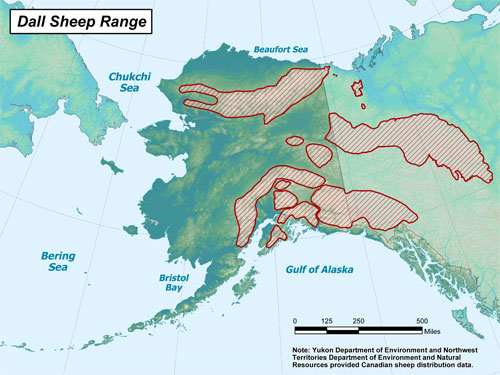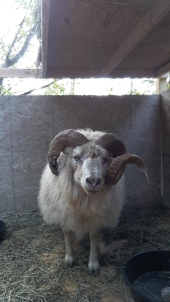posted 2 years ago
Hey I'm from that area! I was born and raised on the Kenai Peninsula, in Homer and Ninilchik. I live in Washington now, and have Icelandic sheep, so maybe I can help here. :)
So first off, obviously the climate is quite a bit milder down here. The worst we've had was 15 degrees for about two weeks last winter. The sheep did fine in it, but your minimum is probably closer to -30, so I would say some kind of good barn is a must. I just have a little 3-sided shed until I get a barn built, but they seem to be just fine with that. In fact they sleep and wander around in the rain all the time - their wool is thick and they really don't seem to notice the wet and cold here. I believe in Iceland they pretty much lock them up for the winter and they don't spend a lot of time outside. Probably you can gauge that by what their preferences are - provide them a barn and see how much they use it during the real cold times.
As for food, I would really encourage you to get creative! Hay isn't the only answer! If you check my post history, I have a long post from last year (that I've been meaning to update) covering what else my sheep eat and what their preference seems to be for each forage as I have them clear out my forest. It's not as useful for you since your forage is different, but it will give you an idea of what they're willing to eat. Icelandics are great foragers; they'll eat almost everything they can reach, and push over stuff they really like. If you've got a big meadow of fireweed or something my guess is that they'd love that! (probably watch out for pushki, that plant is a hazard to everyone lol) I'm deep in a fir forest, so I'm using them to help work on getting it cleared of small trees and useless brush, grass planted on the bottom layer, and expanding the old orchard that was there to provide coppice trees.
So that's my next point - tree hay! There's a couple threads on here about that - basically trees can be just as nutritious as grass. In fact in medieval times that was pretty much all ruminants ate was tree hay. Most deciduous trees can be coppiced pretty easily - cut them off at about 4 feet and let the shoots grow up for a couple years, then keep chopping a few off each year and drying for winter, or feed directly to the sheep in the summer. Like I said I'm working on an orchard that's against a tall fir forest, so I'll be putting in coppice trees as I clear out the smaller stuff. We have a pretty wide variety of trees down here, but I'd guess you're looking at spruce, birch, and alder? I don't have birch here so I can't say for those, but I was disappointed they don't like my red alder trees here. Evergreens are like the very last option, but I was surprised to see them strip a cedar tree in the middle of last winter. Sometimes all they want is something green and juicy lol. However if you have willow or cottonwoods, they should love those! Plus they coppice really well and are super vigorous, so that would be a great option.
To give an idea of how much the sheep eat, I was going through almost a full bale of hay per week for five sheep, 3 of whom were pregnant. That was really expensive, so I switched to haylage, which is available in the area. I realized I was buying REALLY nice hay that was for horses, but sheep are ruminants, so they can process lower quality stuff and still get nutrition from it. The hay bales were $40 apiece, vs $65 for a haylage bale that lasts around 1.5-2 months.
One thing I heard when I was a kid was that goats and sheep don't do well in your area because the soil is really poor (probably low nitrogen?). I heard people say that a goat could starve to death with a belly full of grass. I have NO idea if that's true or not, it's just some kind of old-timer rumor I heard when I was a kid, but I would talk to anyone with livestock to see what their experience has been!
Livestock guardians! I have 3 plus puppies right now (for sale if you wanna come to Washington!) and they've done a great job. We have black bears in the area - each spring there seems to be a new yearling exploring the area, realizing there's too many damn dogs around, and moves off into the mountains later in the summer. We also have cougars, which have been a serious problem for all of my neighbors. Everyone has livestock around here, and everyone has lost animals to the cougars - my next door neighbor said she watched a cougar in the middle of the day stroll through their yard and casually grab a chicken right in front of her lol. Another neighbor has goats and a 'guardian donkey' and they had 3 cougars corner the donkey one night - luckily they noticed and were able to chase the cougars off themselves. Anyway, my dogs seem to have kept the cougars at bay, which is really nice. I haven't lost anything, and these dogs are super vigilant. I'm also somehow the only one to use livestock guardians correctly lol - they live OUTSIDE WITH THE LIVESTOCK! They're fine in just about everything, mine just slept in the snow and rain all winter. My neighbors that do have guardians lost livestock because they felt bad for the dogs and brought them inside at night lol. If you feel like they'll actually have a chance of facing down a bear/wolverine/coyotes/wolves (vs just spreading dog smell/noise), then you should definitely have more than one. They work together, so having more than one is kind of a multiplicative effect. I think a cougar could take one livestock guardian if it came down to it, but they won't mess with two or three. They're expensive dogs to get, and expensive to feed, but I feel good having mine.

 1
1




 1
1





 1
1




 2
2








 2
2




 2
2




 2
2




 2
2














